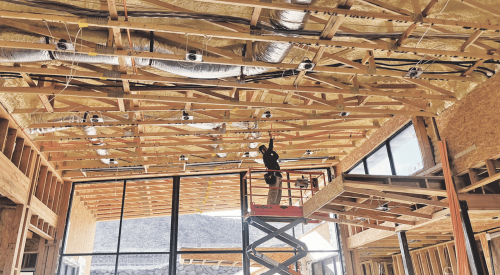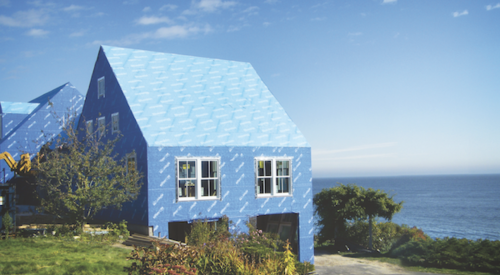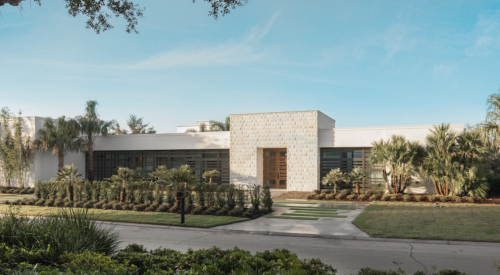|
GreenSpec Criteria
|
Made of Recycled or Salvaged Content
Salvaged material
Post-consumer recycled material
Post-industrial recycled material
Agricultural waste material
Preserve Natural Resources
Reduce material use
Durable or low-maintenance products
Certified wood
Rapidly renewable products
Avoid Toxic or Other Emissions
Natural or minimally processed
Alternatives to CCA-treated wood
Alternatives to ozone-depleting substances
Alternatives to PVC
Alternatives to other hazardous components
Reduce need for pesticides
Reduce pollution or waste from operations
Reduce the Impact of Construction
Reduce construction impacts
Reduce demolition impacts
Reduce renovation impacts
Save Energy or Water
Reduce energy loads
Use energy efficiently
Renewable energy and fuel cells
Conserve water
Promote Healthy
Indoor Spaces
Release minimal pollutants
Block introduction and spread of pollutants
Remove indoor pollutants
Warn occupants of health hazards
Improve light quality
|
To highlight innovative building products and the breadth of green building product offerings, BuildingGreen Inc., publisher of
Environmental Building News and the
GreenSpec directory of green building products, named its top 10 green products of 2003.
The list includes residential and commercial products with environmental attributes ranging from recycled content and bio-based materials to water conservation and durability. Most were introduced during 2003, but some have been around for a while. One, Keim mineral silicate paint, has been on the market for more than 100 years. All were added to GreenSpec during the past year.
To determine worthiness of inclusion in GreenSpec, our editors review products based on rigorous criteria (detailed at right) developed during the past 12 years. They include the product’s raw materials, the environmental safety of the manufacturing process, the product’s durability and maintenance requirements, its impact on energy and water consumption, and its impact on human health.
The 2003 winners most applicable to home building are described below. See the bottom of this article for the full list.
Alex Wilson is the founder and executive editor of Environmental Building News and co-editor of GreenSpec. For information on these resources, visit www.buildinggreen.com or call 800/861-0954.
 |
BioBase 501 foam insulation
Made in part from soybean oil, a renewable material, BioBase 501 from BioBased Systems reduces energy consumption. The low-density, open-cell polyurethane, spray-foam insulation performs like petroleum-based open-cell polyurethane foam, but the polyol component of the two-part polyurethane contains approximately 40% soy oil. After certified installers, using carbon dioxide as the blowing agent, apply the foam at a density of 0.5 pounds per cubic foot, it expands to 100 times its liquid volume. The product has an R-value of 3.7 per inch (R-13 at 3.5 inches). BioBase 501 costs significantly less than conventional open-cell polyurethane insulation because soy oil costs less than petroleum-based polyol.
|
|
|
MemBrain vapor retarder
CertainTeed’s MemBrain vapor retarder helps block the introduction and spread of pollutants and can help improve the durability of building systems. The "smart" vapor retarder is made from a transparent polyamide (nylon-6) film that changes permeability according to relative humidity, varying from less than 1 perm at 20% relative humidity, as would be found during winter in a cold climate, to more than 20 perms at 95% relative humidity. Thus, MemBrain can protect against condensation in winter and allow the building envelope to dry in summer, when humidity typically increases. The 2-mil-thick, high-tensile-strength sheeting is stronger and more durable than standard 6-mil polyethylene. Intended for use in heating and mixed climates, MemBrain is unsuitable for cooling climates with high outdoor humidity or in buildings with high constant indoor relative humidity, such as spaces with swimming pools or spas. Interior finish materials and cavity-fill insulation also must be highly permeable (for example, unfaced fiberglass and vapor-permeable paints).
|
 |
|
 |
American Pride latex paint
Made in part from a renewable, bio-based material, American Pride interior latex paint from Southern Diversified Products releases minimal pollutants. Developed by polymer science researchers at the University of Southern Mississippi, the paint contains latex derived from castor oil. Some oil-based paints derive from bio-based materials such as linseed oil, but this is the first latex paint to use a bio-based material in this way. American Pride contains no volatile organic compounds and thus has virtually no smell, allowing interior painting while a building is occupied. The second paint certified by Green Seal under its new paint standard, American Pride performs well compared with other high-end interior latex paints and is competitively priced, according to Green Seal and painting experts. American Pride flat white has a scrub rating of 880 strokes (ASTM D2486-89), and the eggshell white withstood 2,600 strokes.
|
|
|
EcoPower faucet
Sold primarily in the commercial market, sensor-activated faucets are appearing in homes thanks to the improved hygiene and greater convenience they provide. Toto’s EcoPower faucet, a battery-powered sensor unit, saves water and energy and reduces the waste from battery disposal. A tiny hydro-power generator in the faucet keeps the manganese dioxide lithium battery charged. Toto estimates the battery will last 10 years with an average of five uses per day and as long as 19 years with high usage. When activated, the EcoPower faucet consumes 1 gallon per minute, well below today’s maximum flow rate for faucets of 2.5 gpm at 80 pounds per square inch. The faucet is available with a standard or gooseneck spout.
|
 |
|
 |
American Pride latex paint
Made in part from a renewable, bio-based material, American Pride interior latex paint from Southern Diversified Products releases minimal pollutants. Developed by polymer science researchers at the University of Southern Mississippi, the paint contains latex derived from castor oil. Some oil-based paints derive from bio-based materials such as linseed oil, but this is the first latex paint to use a bio-based material in this way. American Pride contains no volatile organic compounds and thus has virtually no smell, allowing interior painting while a building is occupied. The second paint certified by Green Seal under its new paint standard, American Pride performs well compared with other high-end interior latex paints and is competitively priced, according to Green Seal and painting experts. American Pride flat white has a scrub rating of 880 strokes (ASTM D2486-89), and the eggshell white withstood 2,600 strokes.
|
|





























